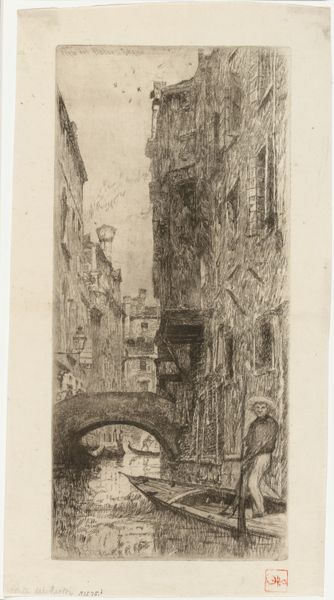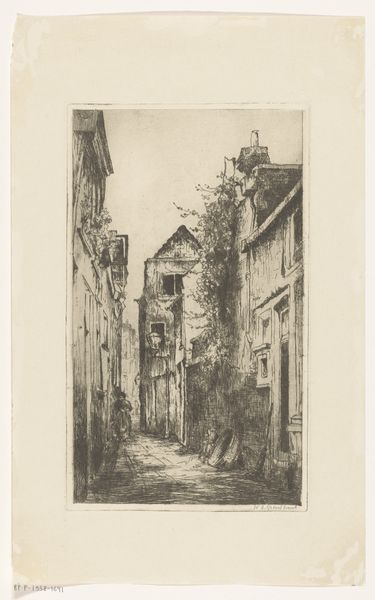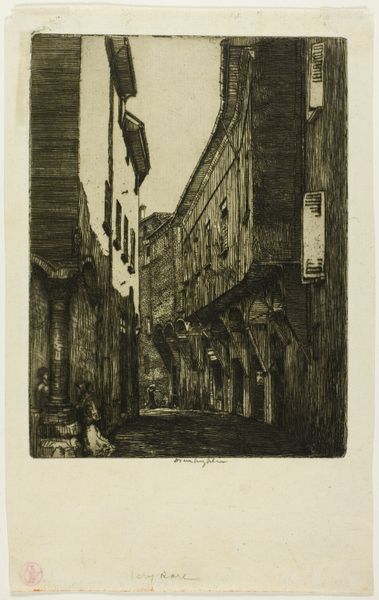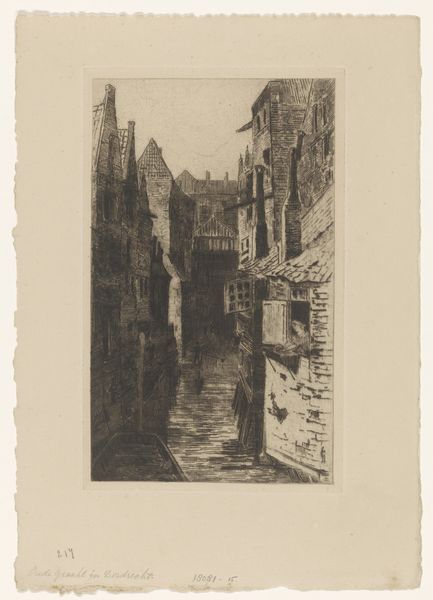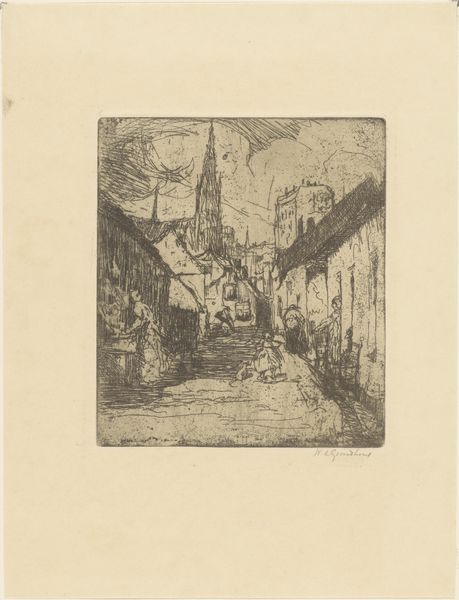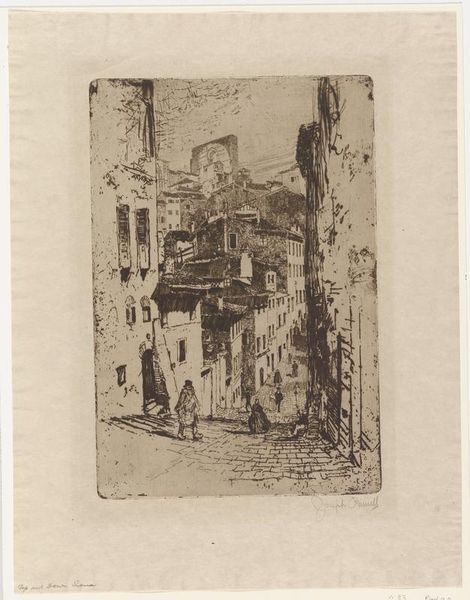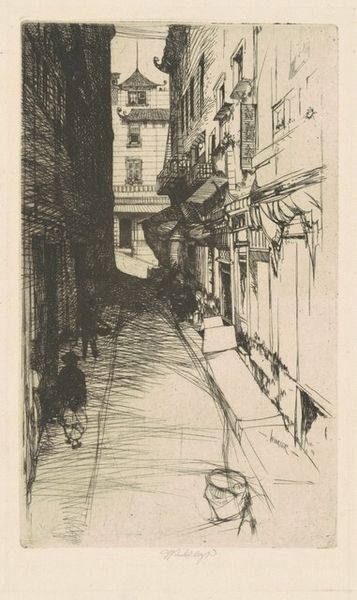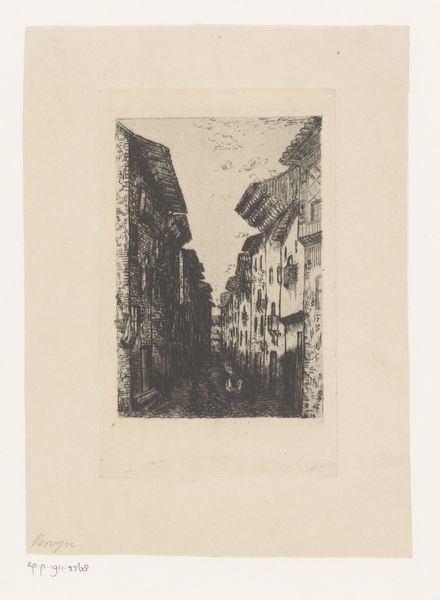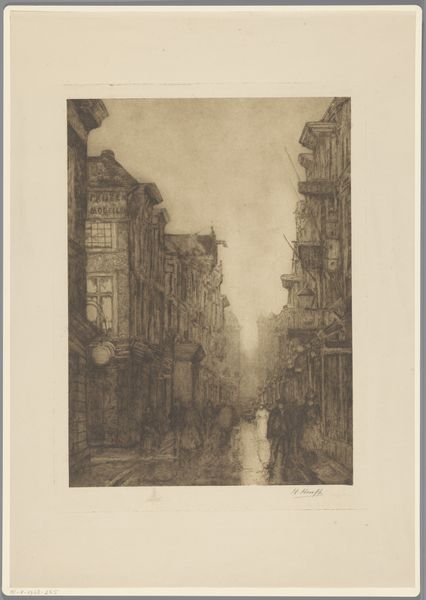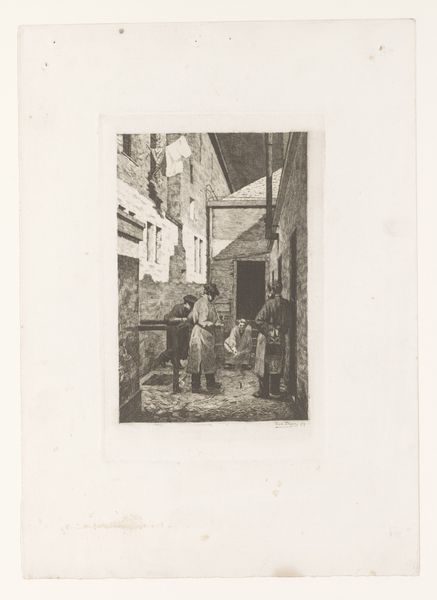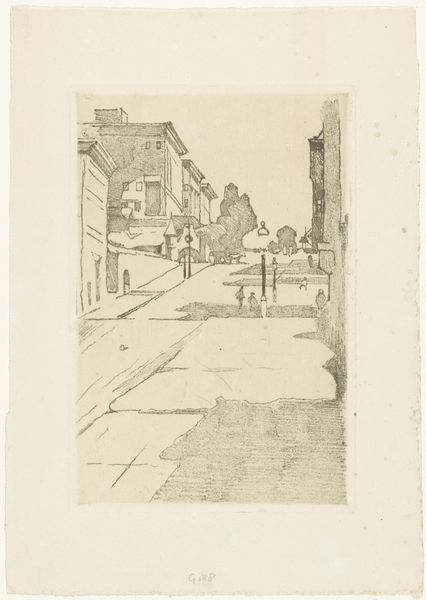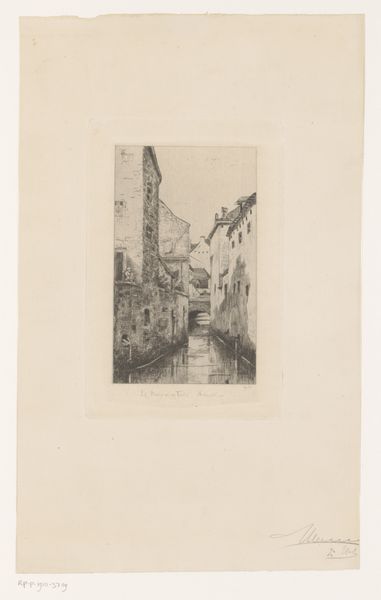
print, etching
# print
#
etching
#
cityscape
#
street
Dimensions: height 234 mm, width 114 mm
Copyright: Rijks Museum: Open Domain
Willem Adrianus Grondhout created this etching, titled "Ulm," by using a metal plate, likely copper or zinc, to create this image. He would have coated the plate with a waxy, acid-resistant substance, then scratched away lines to reveal the metal underneath. Immersing the plate in acid would then bite into these exposed lines, creating grooves that hold ink. Grondhout then wiped ink across the plate, forcing it into the etched lines, and wiped the surface clean. When pressed against paper, the ink transfers, resulting in a print with fine, delicate lines. This process allows for the creation of multiple impressions, making the artwork accessible to a wider audience. The choice of etching as a medium speaks to its capacity for detailed line work, suited to capturing the architectural nuances of Ulm. The labor-intensive nature of etching contrasts with the industrial subject matter, highlighting the tension between handcraft and the burgeoning urban landscape of the time. It's a beautiful balance between material, making, and context.
Comments
No comments
Be the first to comment and join the conversation on the ultimate creative platform.

